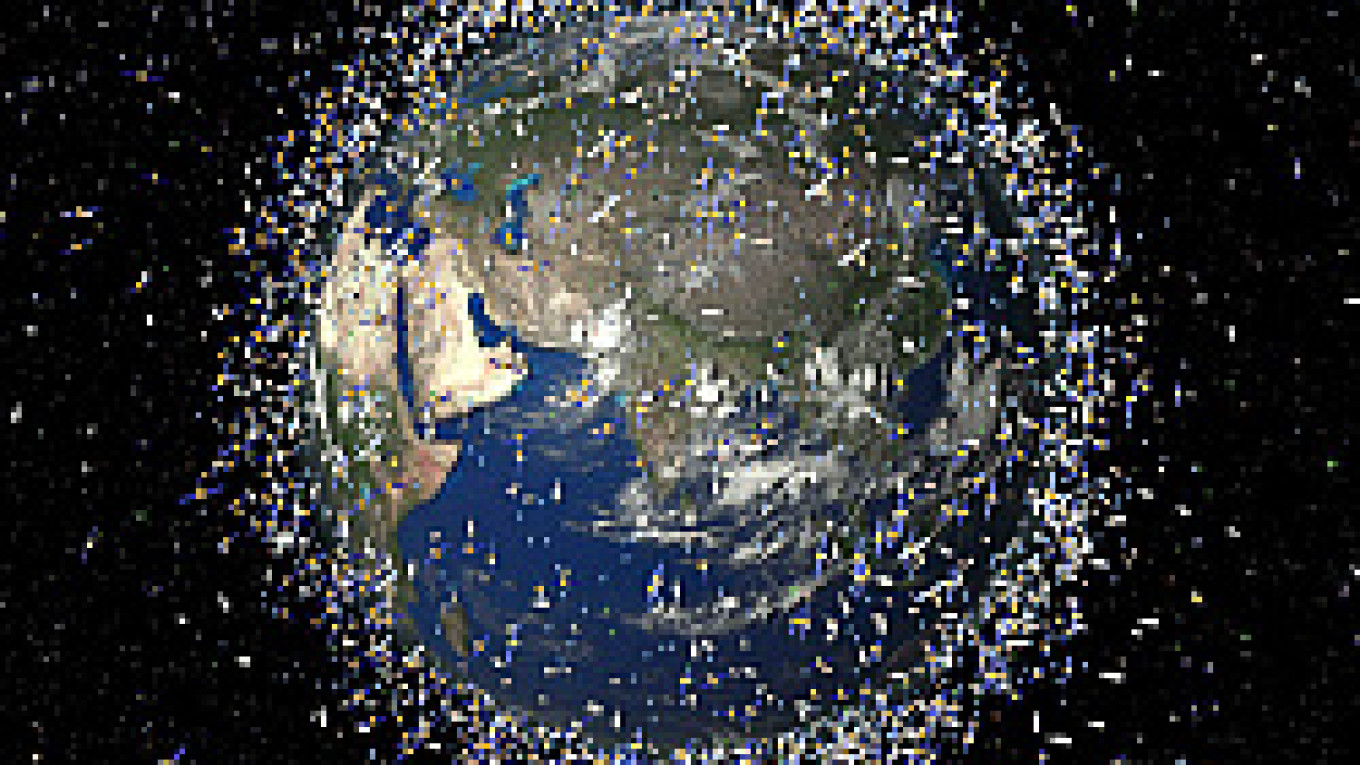The smashup 800 kilometers over northern Siberia involved a derelict Russian spacecraft designed for military communications and a U.S. Iridium satellite, which serves commercial customers as well as the U.S. Department of Defense.
It will take weeks to know the full magnitude of Tuesday's crash, but both the Federal Space Agency and NASA said there was little risk to the international space station and its three crew members.
"There is no immediate danger, but we will carefully monitor the situation," Russian Mission Control spokesman Valery Lyndin said.
He noted that the station's orbit has been adjusted in the past to dodge space debris.
The space junk also poses no threat to the space shuttle set to launch Feb. 22 with seven astronauts, U.S. officials said, though that issue will be reviewed.
The collision scattered fragments in orbits ranging from about 500 kilometers to 1,300 kilometers above Earth, said Space Forces chief of staff, Major General Alexander Yakushin.
The Iridium orbiter weighed 560 kilograms, he said, and the decommissioned Kosmos-2251 military communications craft weighed nearly a ton. The barrel-shaped Kosmos was launched in 1993 and went out of service two years later, in 1995, Yakushin said.
Iridium's craft, shaped like a box with wings, was launched in September 1997 aboard a Russian rocket, said Jonathan McDowell, an astronomer at the Harvard-Smithsonian Center for Astrophysics and space program historian.
As a result of the collision, the U.S. Joint Space Operations Center is tracking 500 to 600 new bits of debris, some as small as 10 centimeters wide, in addition to the 18,000 or so other man-made objects it previously catalogued in space, said Air Force Colonel Les Kodlick of the U.S. Strategic Command.
The Space Forces is also tracking the debris, believed to be traveling at speeds of about 200 meters per second.
Russian space expert Igor Lisov said the debris might threaten earth-tracking and weather satellites in similar orbits as well as a host of old Soviet-built nuclear-powered spacecraft in higher orbits.
If one of the derelict nuclear-powered satellites collides with the debris, radioactive fallout would pose no threat to Earth, Lisov said, but their speeding wreckage could multiply the hazard to other satellites.
The collision was the first high-speed impact between two intact spacecraft, NASA officials said. "We knew this was going to happen eventually," said Mark Matney, an orbital debris scientist at Johnson Space Center in Houston.
There have been four other cases in which space objects have collided accidentally in orbit, NASA said. But those were considered minor and involved parts of spent rockets or small satellites.
Litter in orbit has increased in recent years, in part because of the deliberate breakups of old satellites. It's gotten so bad that orbital debris is now the biggest threat to a space shuttle in flight, surpassing the dangers of liftoff and return to Earth. NASA is in regular contact with the U.S. Space Surveillance Network, operated by the U.S. military, to keep the space station a safe distance from any encroaching objects.
"The collisions are going to be becoming more and more important in the coming decades," Matney said.
Iridium Holdings LLC has a system of 65 active satellites that relay calls from portable phones that are about twice the size of a regular mobile phone. The company said the loss of the satellite was causing brief, occasional outages in its service and that it expected to have the problem fixed by Friday.
Iridium satellites are unusual because their orbit is so low and they move so fast. Most communications satellites are in much higher orbits and don't move relative to each other, which means collisions are rare.
(AP, Reuters)
A Message from The Moscow Times:
Dear readers,
We are facing unprecedented challenges. Russia's Prosecutor General's Office has designated The Moscow Times as an "undesirable" organization, criminalizing our work and putting our staff at risk of prosecution. This follows our earlier unjust labeling as a "foreign agent."
These actions are direct attempts to silence independent journalism in Russia. The authorities claim our work "discredits the decisions of the Russian leadership." We see things differently: we strive to provide accurate, unbiased reporting on Russia.
We, the journalists of The Moscow Times, refuse to be silenced. But to continue our work, we need your help.
Your support, no matter how small, makes a world of difference. If you can, please support us monthly starting from just $2. It's quick to set up, and every contribution makes a significant impact.
By supporting The Moscow Times, you're defending open, independent journalism in the face of repression. Thank you for standing with us.
Remind me later.


